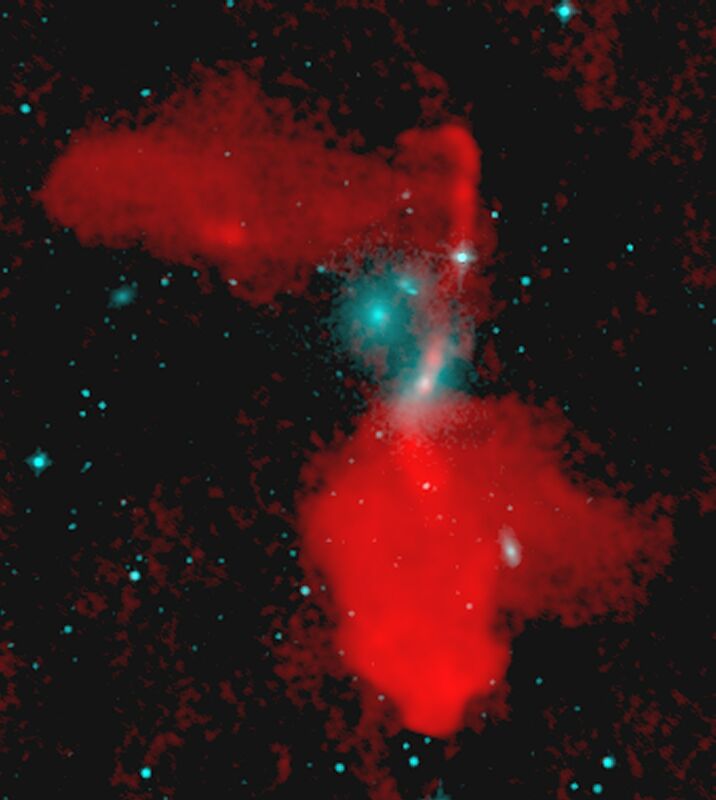Radio/Optical Overlay Radio Galaxy 3C433
Description
False-color image of the unusual double-lobed radio galaxy 3C433. Blue colors show the distribution of stars, made from an HST WFPC2 image (from Sigrid de Koff et al. 1996, ApJSS, 107, 621), and red colors show the radio radiation as imaged by the VLA. The host galaxy is a member of a close pair in a small group. There are bright hot spots and other structure in asymmetric lobes, and a well collimated, one-sided radio jet. This radio emission is from relativistic streams of high energy particles generated by the quasar. Astronomers believe that the jets are fueled by material accreting onto a super-massive black hole at the center of the galaxy hosting the quasar. The high energy particles are shot into extragalactic space at speeds approaching the speed of light, where they eventually balloon into massive radio lobes.
Radio galaxy is at a redshift of z=0.1016 (450/h Mpc, H = 100h km/s/Mpc). The radio image is from a VLA 8.5 GHz (3.6cm) observation at 0.75 arcsec resolution.
Creator
Legacy Astronomical Images
Rights
NRAO/AUI/NSF does not hold full copyright for this image. Contact the archivist for details.
Type
Legacy Astronomical Image
Object Name
3C433
Photographer
Investigators
A.R.S.Black, S.A.Baum, J.P.Leahy, R.A.Perley, J.M.Riley, P.A.G.Scheuer
Telescope
Very Large Array (VLA)
HST
Observation Date
1989-09-14
Type of Observation
continuum
Band
X
Wavelength
3.6 cm
Frequency
8.4 GHz
Center of Image
RA 21:23:44.750, Dec: 25:4:17.800 (J2000)
Field of View
0.016700 x 0.016700 degrees
Link to journal article
Notes
Contact the archivist for a high resolution tif of this image.
Series
Active Galactic Nuclei Series
Unit
Quasars Unit
Citation
Legacy Astronomical Images, “Radio/Optical Overlay Radio Galaxy 3C433,” NRAO/AUI Archives, accessed June 13, 2025, https://www.nrao.edu/archives/items/show/33343.

